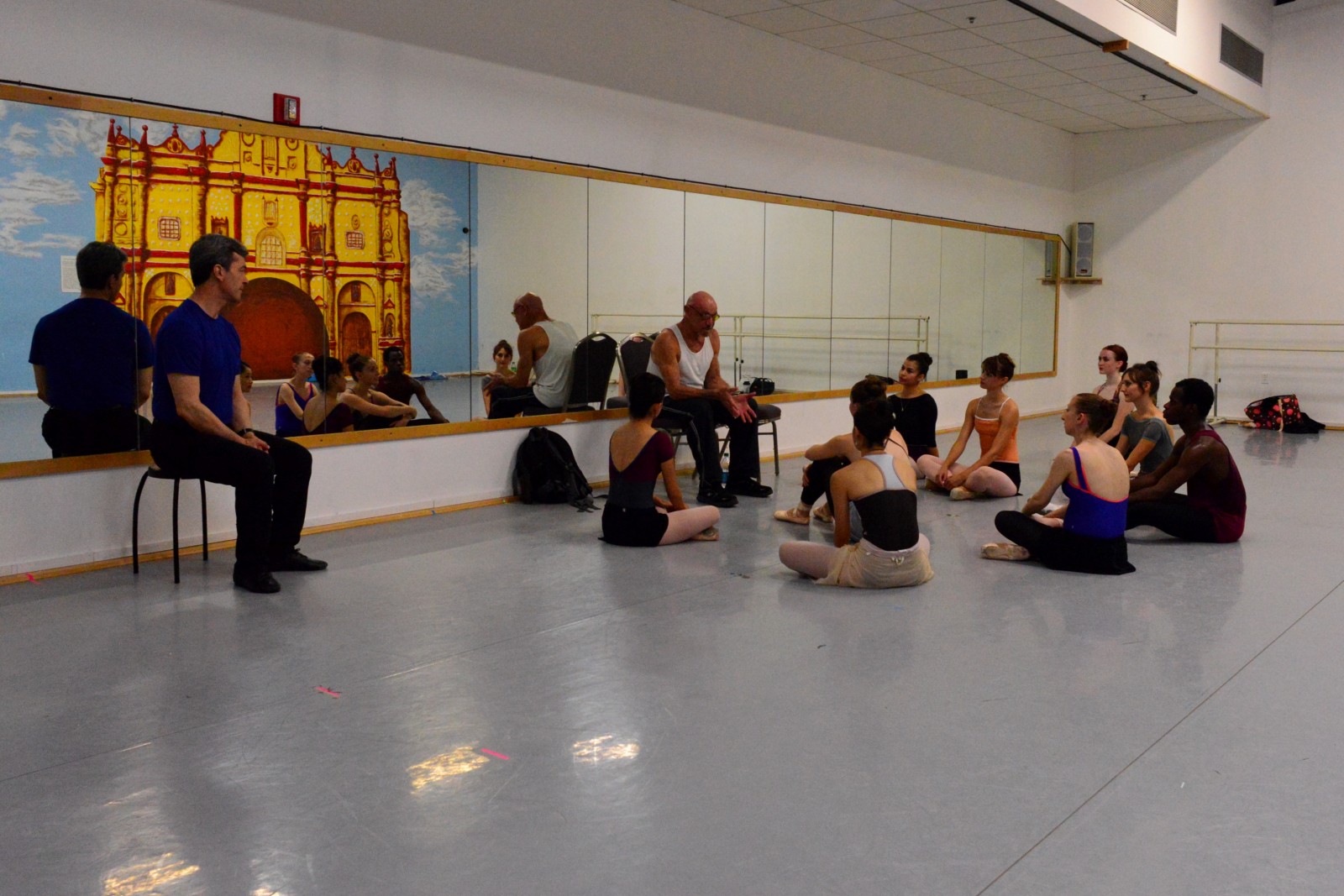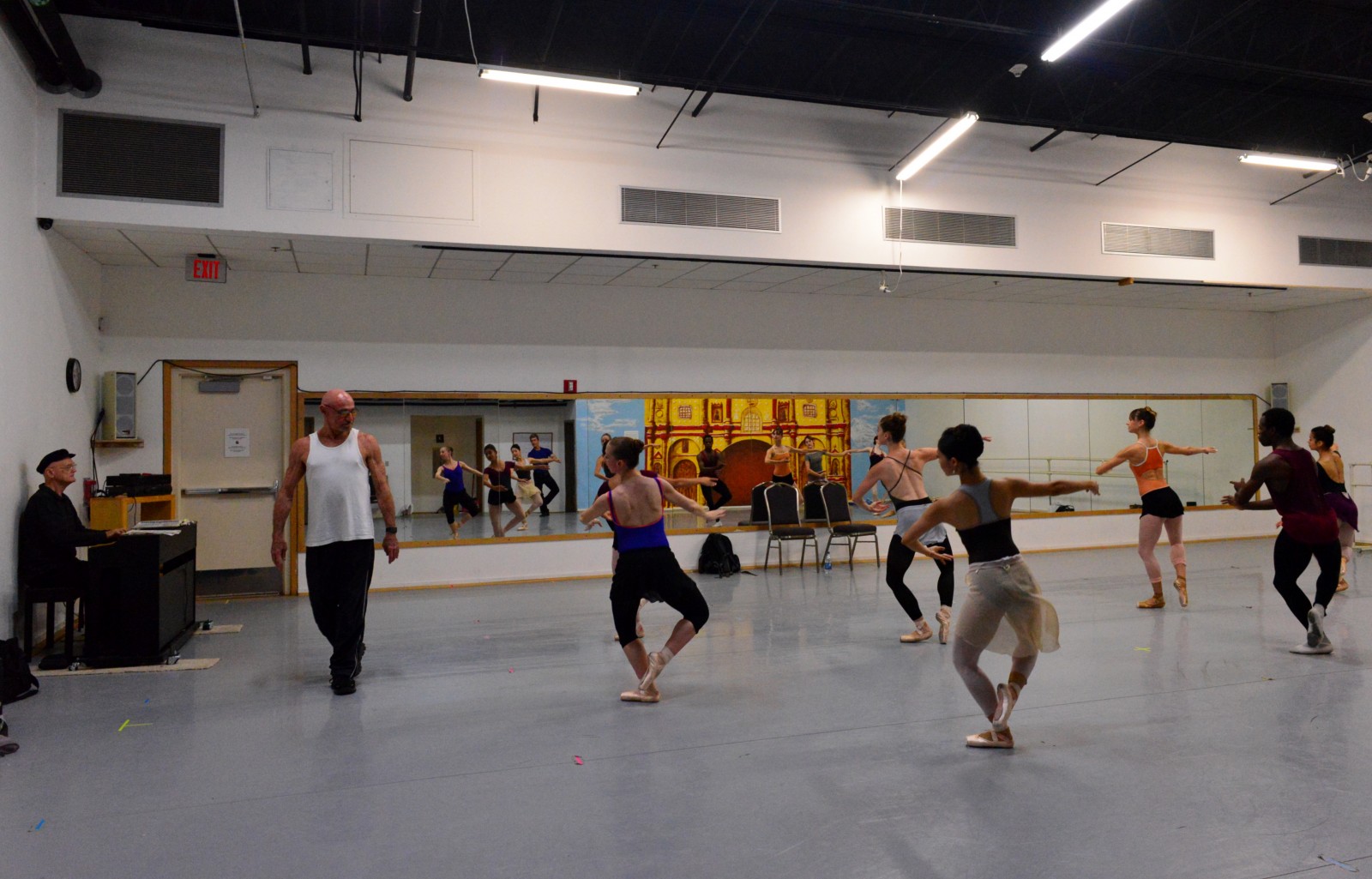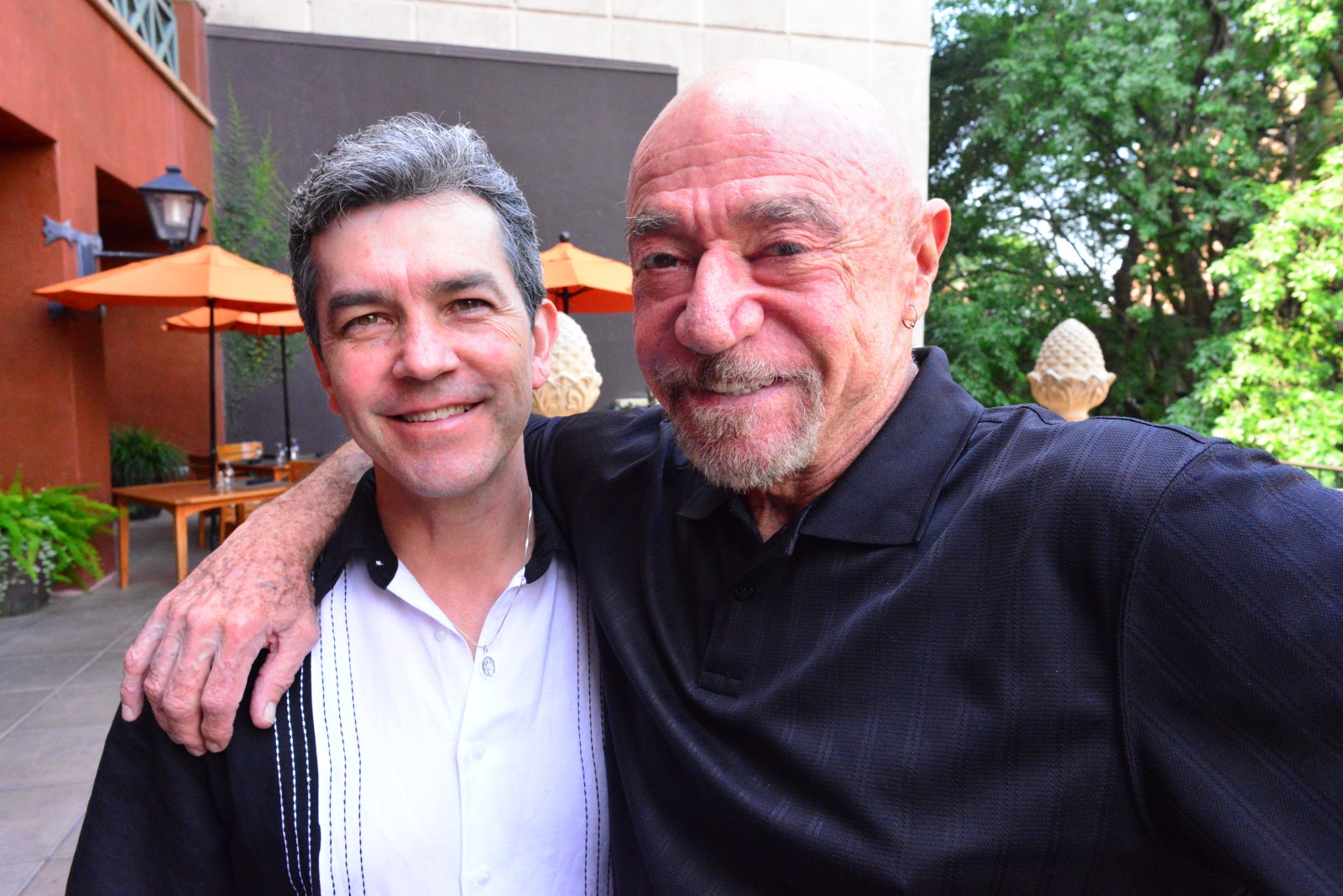When I received an invitation to interview Bruce Marks while he was visiting San Antonio in May, I jumped at the opportunity. Marks is internationally renowned as both a premier danseur of the mid-20th century and a rainmaker on the business side of the equation. He was in town to teach a ballet master class at St. Mary’s Hall when a student related her experiences with this amazing instructor to her mom, Ballet San Antonio (BSA) board member and treasurer, Lisa Galo Westmoreland. From there, the tires hit the road.
At nearly 80 years young, Marks is truly a force majeure. There seemingly isn’t an experience he hasn’t had or a fight he hasn’t fought. In the course of our conversation, it becomes apparent that he has made a fantastic life and career by simply being in the right place at the right time — and then working very hard.
As a young kid from Brooklyn in the middle of the last century, Marks found himself at the recently established High School for the Performing Arts, fondly known as the “PA” and made famous by the 1980 film Fame. Marks remembers that, “Half of the cast of West Side Story was there, too. Only they didn’t know it because Lenny and Jerry (Leonard Bernstein and Jerome Robbins) hadn’t thought it up yet. It was a very exciting time. It was certainly better than going to school, if you know what I mean.” At PA, a very young Robert Joffrey was his first ballet instructor and he counted Dom DeLuise and Suzanne Pleshette among his classmates.
Marks spent his teen years working with modern dance pioneer Pearl Lang. Going on to study at Brandeis University and the Juilliard School, he met his ultimate mentor, the ballet great Antony Tudor. It was Tudor who encouraged him to audition and perform with first the Metropolitan Opera Ballet in 1956 and then American Ballet Theatre (ABT) in 1961. While at ABT, he crossed paths with the iconic and beloved Danish ballerina Toni Lander. They became partners on stage and in life, having a stunning career together, as well as three sons in the process.
In 1971, Marks became the first American principal dancer with the Royal Danish Ballet in Copenhagen — to rave reviews. He remained with the company until his retirement from the stage in 1976. It was at this point that Marks began his second act professionally. He returned to the U.S. at the invitation of William Christensen to take the reins of Salt Lake City-based Ballet West, with Lander as the company’s principal teacher. Under Marks’ leadership, the sleepy regional company transformed into an internationally renowned outfit.
Marks accomplished a similarly remarkable overhaul at Boston Ballet, where he acted as both artistic director and executive director, a first at the time. Tragically, as he was making the transition to Boston, Lander — from whom he had divorced a few years earlier — succumbed to cancer, leaving Marks and their three children grief-stricken. He asserts that this was the most difficult time that he has faced in his life.
As Marks tells the story, “In the mid-’80s, Boston Ballet was hated. They had nothing. They were in a crumbling garage with mice and cockroaches. And Boston was a seriously important city, particularly with regards to education and wealth. I thought I could make a difference in Boston.” It is a tough business, and a seasoned, battle-hardened artistic director was required for the job. These were challenging days, personally and professionally.
With Boston Ballet, Marks had inherited a company with a $4 million budget and $2 million in debt. By the time he stepped down from his position in 1998, becoming Artistic Director Emeritus, Marks had tripled the budget and the attendance. Beyond creating a financial, artistic and educational success, Marks broadened the repertory by combining classics with works by up- and-coming modern ballet choreographers.
So, it should come as no surprise that Marks favors an underdog — which brings us to the point of this story. Bruce Marks is seriously excited about the prospects for Ballet San Antonio.
As the company was going through a transition, Marks was asked to meet with Board Chair Christine Varela Mayer and Executive Director Jenniann Colón. “They began talking about the company and I was seriously impressed — especially with Christine,” Marks says. “Wow! She’s a really smart cookie.”
A smart — and tough — cookie indeed, Mayer finds herself in the swirl of taking the company to the next level while the board makes some hard decisions. With the hiring of Colón and Artistic Director Willy Shives in the midst of the 2015-16 season, the company is in full-tilt boogie.
“Now that we have a plan together, we are ready to move forward,” Mayer says. “This is what we have been doing this season — trying to revamp the entire company and make it financially sustainable. How do we reach more of the community? I think when we do that, this next season we will see a big opportunity in our ability to beef up our revenue stream greatly.”
Mayer confirms that while nothing is firm, the company has received positive feedback for its efforts from present and potential funders. “We have had preliminary discussions with some corporations about this. It doesn’t make sense to plan our season and then hope we get funding to catch up to it. That’s backwards. We are restructuring and reorganizing. What makes sense, is to come to corporations now and say here are our plans for the next three years. Will you partner with us to bring a portion of the season to the community? It is our hope to solidify funding well before the season so that we know what our budget is before going into it.
As the summer issue of Out In SA goes to press, Ballet San Antonio is working through the details of its 2016-17 season at the Tobin Center for the Performing Arts. Following the theme “A Celebration of Love,” the season begins with Don Quixote (October 14-16), continues with The Nutcracker (November 25-27 and December 1-4) and finishes with The Sleeping Beauty (February 17-19). The company will once again present a free performance, Ballet in the Park, in the spring.
Shives will be taking on the lion’s share of choreographic duties, while occasionally setting works that he can reasonably gain the rights to. Given that he is an esteemed répétiteur for both the Antony Tudor Trust and for The Gerald Arpino and Robert Joffrey Foundation, that well of knowledge runs deep. For example, The Nutcracker will be a new production, combining the choreography of Shives and Gerald Arpino. Shives points out that this is a part of trimming the budget. “We are holding onto our spending and the board is supporting this approach. This is why we are holding off with our spring performance [Ballet Alive!]. Who knows? There may be a fundraiser or touring.”
At this time, it has been confirmed that the company will be traveling south at the invitation of the University of Texas Rio Grande Valley — home for Shives and his wife Evie Peña Shives, a former ballet dancer. It promises to be a special homecoming and the beginning of the company’s outreach to be the “Ballet Company to the Southwest.”
Another discussion on the table at press time is whether upcoming BSA performances will feature live accompaniment from the San Antonio Symphony. While all concerned would prefer to be working with live music, it is a rather large line item on the balance sheet. Support and funding must be in place to make that happen.
During her short tenure, Colón has taken the lead in bringing the budget to heel. “Jenni is awesome [and] incredibly hard-working,” Mayer says. “She’s the numbers person. There’s no ‘it would be beautiful if.’”
Although Colón has an extensive background working with educational nonprofits, this is her first experience working in the ballet world. In regard to meeting with Marks, Colón says, “Our biggest takeaway was to follow our instincts and keep our audience guessing. He also shared the importance of being a community- focused organization, and continually finding new ways to engage the community and stay accessible to San Antonio and the surrounding areas.”
“She’s getting to know all the dancers now and getting plugged in emotionally, really caring about the company and art form. At the same time, she is true to who she is,” Mayer says of Colón’s ascent into the world of ballet. “She knows the difference between this is what we can do with what we have, versus this is really what we need. She asks the question, ‘How do we meet in the middle and what do I need to do to get us to the next level?’ I think she is really feeling part of the company and part of the movement.”
There is a lot of discussion at Ballet San Antonio about outreach and serving the community. “It is so important to reach out to the public school system,” Shives says. “It is children who will ask their parents to take them to the ballet. If it is important to our children, it is important to their parents. So, hearing what Bruce has had to say about this has validated everything that I want to do.”
In addition to eight years as a principal dancer with the Joffrey, Shives served as the company’s Ballet Master (from 2008 to 2013) and Community Outreach Program Coordinator. These are skills that benefit the dancers, the company and the community at large. “We have incredible ideas for outreach,” Mayer says. [Shives] is going to ramp things up to give a deeper experience to a greater number of students. This is going to have an incredible impact on this company’s ability to move forward.”
Marks echoes Shives’ approach to community: “The way for the ballet to get into the community is through the community — through the children … Any art form is transformational, it changes how you look at the world. It’s about learning to think … Most people don’t go to the ballet because they think it’s boring. If it doesn’t inspire, it doesn’t work. You must also create a company that looks like the city.”
Indeed, Ballet San Antonio has already been recognized for its work with the Boys & Girls Club of San Antonio, and is a partner company of American Ballet Theatre’s “Project Plié” — an initiative focused on increasing racial and ethnic representation in ballet.
“You should be very excited,” Marks says. “This is it. Everything’s here. This is one of the fastest-growing cities in America. You have the demographics, although they are a little tougher than what I faced with Ballet West or Boston Ballet … You have hired a really knowledgeable artistic director, who is now staging the works of the man who made me a ballet dancer, Antony Tudor. This is an exciting time for this company, because if [Shives] can do that, he can run a really good ballet company — that work is nuanced and very special … You’ve got everything. All you need is a little guidance. I will do anything for you. This is the exciting time for me. When I came here, I was trembling inside with the excitement of what could happen here. It can happen here. It will happen here.”
In describing the interaction between Shives and Marks, Mayer says, “Bruce is 30 years Willy’s senior. Although there is this age gap, it is incredible to watch them together. It is fun to hear them speak — planning, preparing. Bruce is looking at the turnaround: How are we going to make this company work? How are we going to make everyone in the country know about Ballet San Antonio?”
Mayer sums it up: “If we are able to unite the dance community — and I mean ballet, modern, jazz, improv, Latin dance, everybody — and come together as lovers of dance in the city, we have an incredible opportunity across every demographic to do more. We are lucky that dance reaches so many corners of the city and beyond.”
And as for Marks? This man has a good life. He lives in a beautiful home in South Florida with his husband of more than 30 years, the artist Paul Fiumedoro. There are children, grandchildren and a beloved dog. He is working on his memoirs. “I’m about 400 pages in,” he says. “The distant past has distilled itself. I am stuck at Boston Ballet and the transformation. I think there is an entire volume in just that.”
And Marks will continue to share his knowledge and experience wherever he can.“I wish more people would ask,” he says. “For a while, I wanted to start a seminar for artistic directors, because there is no training program for what we do. It’s silly for you to make my mistakes. It is useful to hear. I could not have done what I did in Boston before being at Ballet West.”
“Definitely, we have his number,” Shives says.
“I am available,” Marks says. “All they have to do is pick up the phone and call.”






